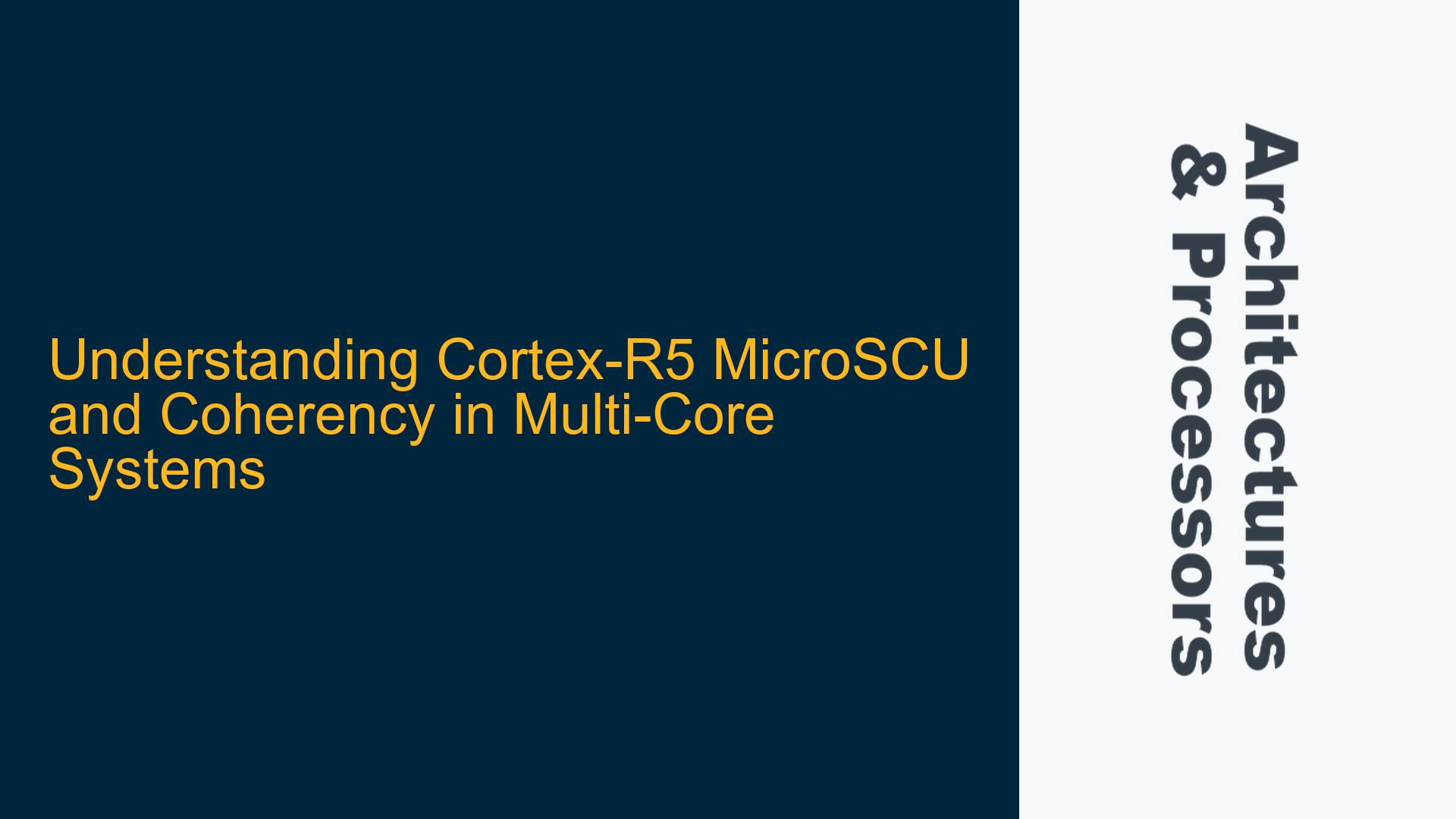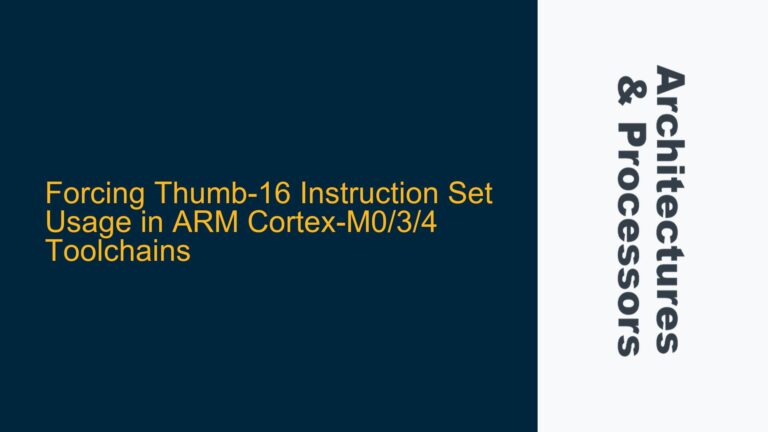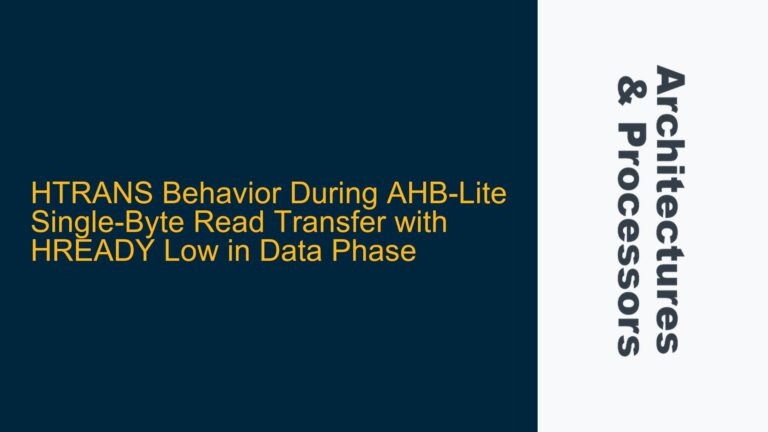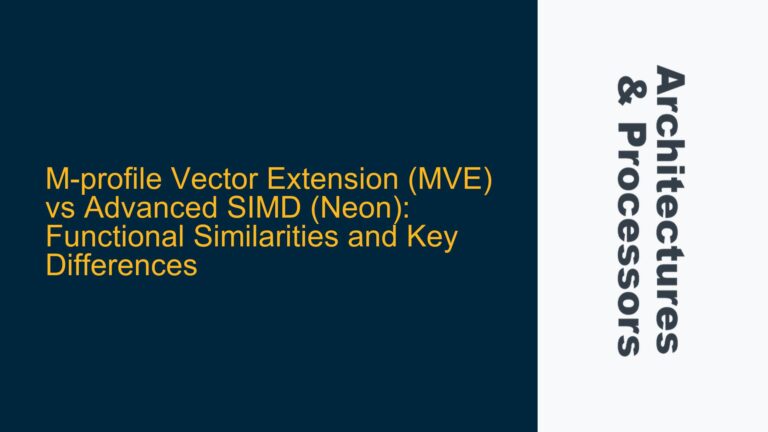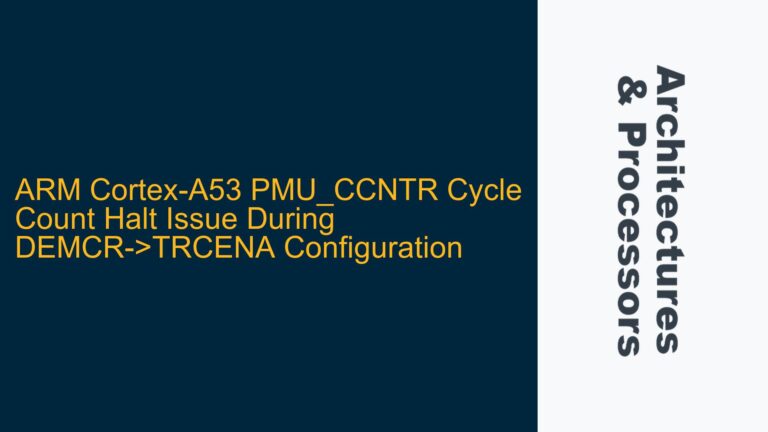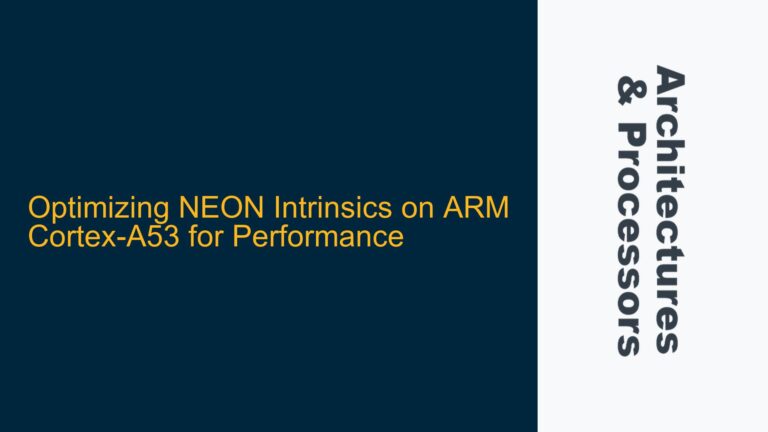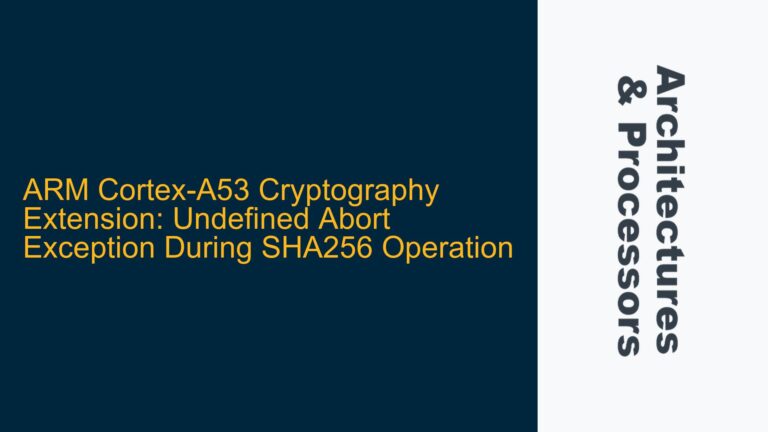Cortex-R5 MicroSCU Role in Multi-Core Coherency
The Cortex-R5 processor, a member of ARM’s real-time processor family, is widely used in embedded systems requiring deterministic performance and high reliability. One of the key architectural features of the Cortex-R5 is its optional MicroSCU (Micro Snoop Control Unit), which plays a critical role in maintaining cache coherency in multi-core configurations. The MicroSCU is particularly relevant in systems where multiple Cortex-R5 cores are integrated into a single SoC (System on Chip), such as the Cortex-R5 SOC-400 PIL configuration.
The MicroSCU is designed to manage cache coherency between the Cortex-R5 cores and external accelerators or masters. It ensures that all cores and external devices have a consistent view of memory, which is essential for correct operation in multi-core systems. Without the MicroSCU, each Cortex-R5 core would operate with its own independent cache, leading to potential inconsistencies when multiple cores or external devices access the same memory locations.
In a dual-core Cortex-R5 configuration, the MicroSCU is responsible for snooping the caches of both cores to ensure that any changes to shared memory are propagated correctly. This is particularly important in real-time systems where data integrity and consistency are paramount. The MicroSCU achieves this by monitoring the bus transactions and invalidating or updating cache lines as necessary to maintain coherency.
However, it is important to note that the Cortex-R5 does not provide hardware coherency between the two cores in the same way as an ARM Cortex-A series processor with a full-fledged SCU (Snoop Control Unit). Instead, the MicroSCU in the Cortex-R5 is more limited in scope, primarily focusing on coherency with external masters through the Accelerator Coherency Port (ACP). This distinction is crucial when designing systems that rely on the Cortex-R5 for multi-core processing.
Misconfigurations and Limitations of MicroSCU in Cortex-R5
One of the common issues that arise when working with the Cortex-R5 and its MicroSCU is the potential for misconfiguration. The Cortex-R5’s configuration sanity checks are designed to prevent such issues by flagging errors when the MicroSCU is not present or improperly configured. For example, if a system is configured with only one Cortex-R5 core or if the D-Cache (Data Cache) is not present, the configuration sanity checks will flag an error, indicating that the MicroSCU is required for proper operation.
This requirement stems from the fact that the MicroSCU relies on the presence of a D-Cache to function correctly. Without a D-Cache, there is no need for cache coherency management, and the MicroSCU becomes redundant. Similarly, in a single-core configuration, the MicroSCU is unnecessary because there are no other cores to maintain coherency with. Therefore, the configuration sanity checks serve as a safeguard to ensure that the MicroSCU is only enabled when it is actually needed.
Another limitation of the Cortex-R5’s MicroSCU is its inability to provide full hardware coherency between the two cores in a dual-core configuration. As mentioned earlier, the Cortex-R5 is not designed as a traditional MP (Multi-Processor) cluster, and thus, it does not offer the same level of coherency as an ARM Cortex-A processor. This means that software running on a dual-core Cortex-R5 system must take additional steps to ensure data consistency between the cores, such as using explicit cache management instructions or memory barriers.
Furthermore, the MicroSCU’s primary role is to maintain coherency with external masters through the ACP, rather than between the Cortex-R5 cores themselves. This can lead to confusion when designing systems that require coherency between the cores, as the MicroSCU may not provide the expected level of support. In such cases, it is essential to carefully review the Cortex-R5’s Technical Reference Manual (TRM) and understand the limitations of the MicroSCU in the specific configuration being used.
Implementing Cache Coherency in Cortex-R5 Multi-Core Systems
To effectively implement cache coherency in a multi-core Cortex-R5 system, it is necessary to understand the role of the MicroSCU and how it interacts with the rest of the system. The following steps outline the key considerations and best practices for ensuring coherency in a Cortex-R5-based system:
-
Enable the MicroSCU in Multi-Core Configurations: When configuring a dual-core Cortex-R5 system, ensure that the MicroSCU is enabled. This is typically done during the initial setup of the SoC, and it is essential to verify that the MicroSCU is correctly configured and operational. The configuration sanity checks should be used to confirm that the MicroSCU is present and properly enabled.
-
Configure the D-Cache: The MicroSCU relies on the presence of a D-Cache to manage cache coherency. Ensure that the D-Cache is enabled and properly configured for each Cortex-R5 core. This includes setting the appropriate cache size, line length, and associativity based on the system’s requirements. The D-Cache configuration should be consistent across all cores to ensure uniform coherency management.
-
Use the Accelerator Coherency Port (ACP) for External Coherency: If the system includes external accelerators or masters that require coherency with the Cortex-R5 cores, the ACP should be used in conjunction with the MicroSCU. The ACP allows external devices to access the Cortex-R5’s cache and ensures that any changes to shared memory are propagated correctly. Properly configure the ACP and ensure that it is connected to the MicroSCU to enable coherency with external devices.
-
Implement Software-Based Coherency Mechanisms: Since the Cortex-R5 does not provide full hardware coherency between its cores, software-based mechanisms must be used to ensure data consistency. This includes using memory barriers, cache maintenance operations, and explicit cache invalidation or cleaning instructions. These mechanisms should be carefully integrated into the software to prevent race conditions and ensure that all cores have a consistent view of memory.
-
Monitor and Debug Coherency Issues: Coherency issues can be challenging to diagnose, especially in real-time systems where timing is critical. Use debugging tools and techniques to monitor cache behavior and identify any inconsistencies. This may include using hardware performance counters, trace tools, and simulation models to observe cache transactions and detect potential coherency violations.
-
Review the Cortex-R5 Technical Reference Manual (TRM): The Cortex-R5 TRM provides detailed information on the processor’s architecture, including the MicroSCU and its capabilities. Carefully review the TRM to understand the limitations and requirements of the MicroSCU in the specific configuration being used. This will help ensure that the system is designed and implemented correctly, with all necessary coherency mechanisms in place.
By following these steps and understanding the role of the MicroSCU in the Cortex-R5, designers can effectively implement cache coherency in multi-core systems. While the Cortex-R5’s MicroSCU has some limitations, careful configuration and the use of software-based coherency mechanisms can help ensure that the system operates correctly and reliably.
In conclusion, the Cortex-R5’s MicroSCU is a critical component for maintaining cache coherency in multi-core systems, particularly when external accelerators or masters are involved. However, its limitations must be carefully considered, and additional software-based mechanisms may be required to ensure data consistency between the cores. By understanding the MicroSCU’s role and following best practices for coherency management, designers can create robust and reliable embedded systems based on the Cortex-R5 processor.
